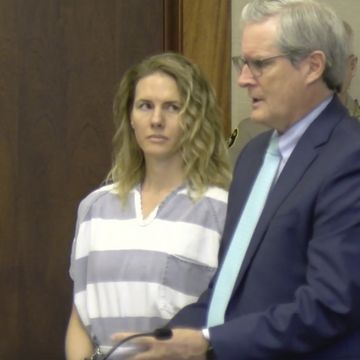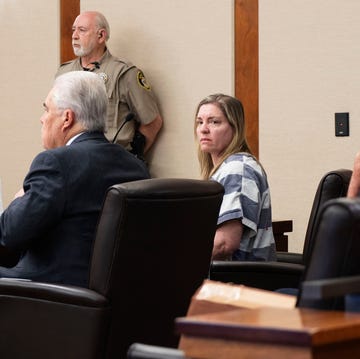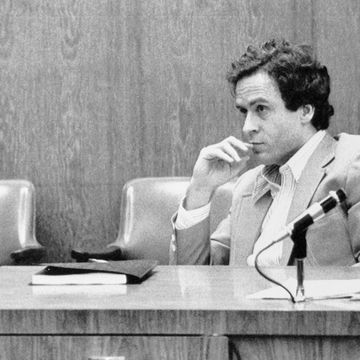On back-to-back nights in August 1969 in Los Angeles, seven people lost their lives: Sharon Tate, Jay Sebring, Abigail Folger, Wojciech Frykowski, Steven Parent, and Leno and Rosemary LaBianca. They were killed by members of Charles Manson’s quasi-hippie commune, also known as the Manson Family.
The “official narrative” of what happened on those two horrifying nights in those houses near Hollywood was thoroughly and exhaustively laid out in the seminal 1974 book, Helter Skelter. In what is still the best-selling true crime book of all time, Vincent Bugliosi, the prosecutor in the cases against Charles Manson and his acolytes, laid out the Family’s motives and crimes, and how the prosecution secured their convictions.
So, why do some skeptics still have questions about the crimes commonly referred to as the Tate-LaBianca Murders? Some call out the holes in Bugliosi’s accounting of the crimes, while others say his “Helter Skelter Theory” came together a little too neatly. Fueling interest in the group and its crimes were how many rich and famous people intersected with the Manson Family during their time in Los Angeles but emerged unscathed.
Then there’s the broader context in which these events unfolded. Iconic events that supposedly symbolized the end of the 1960s—the Manson murders, the Kent State shooting, Altamont, the death of Fred Hampton, and the disbanding of the Black Panther Party—have all been recolored by revelations about the illegal actions of the U.S. government to deliberately sabotage the counterculture through programs like the FBI’s COINTELPRO, the CIA’s CHAOS, and the LSD-based mind-control experiment MKUltra.
Journalist Tom O’Neill spent 20 years researching what eventually became his 2019 book, CHAOS: Charles Manson, the CIA, and the Secret History of the Sixties, the most exhaustive reexamination of the motives of the Manson Family. And in March 2024, Oscar-winning documentarian Errol Morris, whose groundbreaking 1988 documentary The Thin Blue Line led to the exoneration of its subject, adapted O’Neill’s book into the Chaos: The Manson Murders, now streaming on Netflix.
In CHAOS, O’Neill paints Bugliosi as a man who “put together the pieces of the Manson murders” by deliberately leaving out anything that didn’t fit the story he wanted to tell. In some cases, it’s implied that Bugliosi, who died in 2015, had massaged or even outright coerced testimony to cover up certain inconvenient facts about the case.
But while O’Neill speculates where some of the loose threads he uncovered might ultimately lead—hinting at links to the mafia, the CIA, and secret Nazis—he doesn’t offer a single, definitive explanation that ties everything neatly together.
This leaves us in the same place the police and the public were back in the summer of 1969: trying to shape shocking, senseless violence into a coherent narrative. But as we get further away from the conclusion of the tumultuous ’60s, new theories about the Manson Family’s motives have emerged that reflect both what we’ve learned in the ensuing decades and how we’ve come to view ourselves and the country during that seismic decade.
The Manson Family murders weren’t immediately connected
The first set of Manson Family murders, which took place at the house on 10050 Cielo Drive in Benedict Canyon on August 9, 1969, shocked the city of Los Angeles. The victims included Tate, an actor and the wife of filmmaker Roman Polanski; Sebring, the preeminent hairstylist to the stars; and Folger, the heir to the Folgers Coffee Company. The deaths were brutal and possibly even ritualistic, as suggested by the message “Pig” smeared in blood on the wall.
The shocking crime was such a big story in the newspapers the next day that newsstand owner John Fokianos discussed it with one of his regular customers, Leno LaBianca, at around 2 a.m. on August 10. Mere moments after that conversation, Leno and his wife, Rosemary, were murdered in nearly identical fashion.
Yet initially, the Los Angeles Police Department didn’t think the same killers were responsible for the Tate and LaBianca murders. In fact, the LAPD posited that the LaBianca murders might have been a “copycat” of the Tate murders, despite the fact that the Tate killers were still unidentified and at large.
Initially, the murders were presumed to be drug-fueled “freaky crimes”
Los Angeles magazine, reflecting in 2019 on its original October 1969 coverage of the then-unsolved murders, acknowledged it had “attempted to wrap drugs, youth culture, Woodstock, the Black Panthers, and Rosemary’s Baby into the same package,” suggesting the killings were part of a wave of “freaky crimes.”
After investigators found drugs at the Tate crime scene, including “marijuana, hashish, cocaine and a hallucinogen known as MDA,” per The New York Times, the assumption began to circulate that the murders were the result of a drug deal gone awry. (As O’Neill notes in his book, both Sebring and Frykowski allegedly bought drugs for the many Hollywood parties they hosted or attended.) As such, “freaky crimes” gave way to a sentiment of “live freaky, die freaky,” despite the LaBiancas having no such connection to the drug scene.
Spurned by Hollywood, Manson might have wanted revenge
When charges for the murders were brought against Manson and his followers between October and December 1969, however, a new narrative began to emerge: Manson wasn’t just a drug pusher—he was also the quasi-guru of a cult of kids living at an old movie ranch. More importantly, he was an ancillary figure in the Hollywood scene, having crossed paths with music luminaries like Neil Young, Mama Cass, The Beach Boys’ Dennis Wilson, and music producer Terry Melcher.
And while it wasn’t officially clear what, exactly, Los Angeles’ power players got out of their relationship with Manson, when it came time for prosecutor Bugliosi to make his case, it hinged in part on what Manson had hoped to get out of Melcher: a record deal. Manson fancied himself a rock star, especially after The Beach Boys covered one of his songs without crediting him. Melcher’s rejection of Manson, Bugliosi submitted, is why the cult leader had targeted the Cielo Drive home; it had formerly belonged to Melcher, and Manson wanted to send him a message.
The Helter Skelter Theory capitalized on Charles Manson’s race war prophecy
As for why the Family committed the killings at all, Bugliosi came up with the “Helter Skelter Theory.” This ascribed motive proposes that Manson preached to his followers of a coming race war between white and Black people, during which he and the Family would go into hiding, emerging when Black people had defeated white people. Manson and his Family would then subjugate the victors of the race war because they possessed “superior intellects.”
As “proof” of his prophecy, Manson pointed to The Beatles’ 1968 album, colloquially referred to as The White Album. Manson suggested that songs like “Revolution #9,” “Piggies,” and of course “Helter Skelter” were all secret messages validating his assertions. The murders, then, were meant to act as a catalyst to incite Manson’s prophesied race war, supposedly because they would be attributed to the Black Panthers.
Some theories point to government connections with the Manson Family
Years later, when journalist O’Neill questioned Bugliosi about some of the inconsistencies in his conclusion, O’Neill said the best-selling author wasn’t just evasive but downright aggressive. That rebuke led O’Neill to dig deeper and embark upon a 20-year search that uncovered Manson’s larger connections, not just to the Hollywood elite, but the covert operations of the federal government.
O’Neill discovered Manson and his followers had, on several occasions, been allowed to walk away from prior arrests in a manner that suggested Manson had perhaps been a police informant. O’Neill also found Manson and his female followers frequented the Haight Ashbury Free Clinic in San Francisco, which was operated by Dr. Louis Jolyon “Jolly” West, a man known for his involvement with the CIA’s infamous MKUltra project.
O’Neill also picked apart the most seemingly believable elements of Bugliosi’s Helter Skelter Theory. If Manson had targeted Cielo Drive to scare Melcher, why was O’Neill able to find previously suppressed testimony that showed Melcher had spent time with Manson after the murders had been committed?
The author, meanwhile, who perhaps best answers the Manson motive question doesn’t really answer it at all. Joan Didion’s famous essay “The White Album” portrays a late 1960s Los Angeles where “everything was unmentionable but nothing was unimaginable.”
In Didion’s essay, most famous for the opening line “We tell ourselves stories in order to live,” she recalls the first reports of the murders on August 9: “I remember all of the day’s misinformation very clearly, and I also remember this, and wish I did not: I remember that no one was surprised.”
The Manson murders, in Didion’s view, aren’t so much the product of CIA experiments or Beatles-inspired delusions; they are simply an inevitability, something that was bound to happen eventually.
Michale Natale is a News Editor for the Hearst Enthusiast Group. As a writer and researcher, he has produced written and audio-visual content for more than fifteen years, spanning historical periods from the dawn of early man to the Golden Age of Hollywood. His stories for the Enthusiast Group have involved coordinating with organizations like the National Parks Service and the Secret Service, and travelling to notable historical sites and archaeological digs, from excavations of America’ earliest colonies to the former homes of Edgar Allan Poe.

















